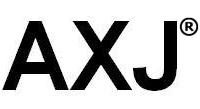DISTILLATION EQUIPMENT AND PROCESSES PDF >> DOWNLOAD LINK
DISTILLATION EQUIPMENT AND PROCESSES PDF >> READ ONLINE
In designing a distillation column, the thermodynamics of the vapor and liquid phases must be understood. The vapor-liquid equilibrium (VLE) determines the minimum number of stages required to achieve the degree of separation needed. The minimum reflux ratio also depends on the VLE data of the mixture. distillation: equipment and processes —winner of the 2015 prose award in chemistry & physics from the association of american publishers—is a single source of authoritative information on all aspects of the theory and practice of modern distillation, suitable for advanced students and professionals working in a laboratory, industrial plants, or a … Figure 4 depicts the structure of the distillation process by dividing the vapor/liquid equilibrium information into three distinct zones of process and equipment requirements: stripping, rectifying and dehydration. This division is the basis for the design of equipment and systems to perform the distillation tasks. Considerations in when describing the equipment it has been necessary to describe to some extent just how it is used, even though this is dealt with at length in the Distillation, even fractional distillation, is really a very simple process and it might have been sufficient simply to provide a bare outline of how to proceed. It was decided, however, Simple distillation involves heating the liquid mixture to the boiling point and immediately condensing the resulting vapors. This method is only effective for mixtures wherein the boiling points of the liquids are considerably different (a minimum difference of 25 o C). The purity of the distillate (the purified liquid) is governed by Raoult Distillation is the process of heating a liquid solution, or a liquid-vapor mixture, to derive o a vapor and then collecting and condensing this vapor. In the simplest case, the products of a distillation process are limited to an overhead distillate and a bottoms, whose compositions di er from that of the feed. significant amount was learned about the actual operation, workflow, and overall process. After a thorough examination of the collected data, a design was completed, and summary of operation was compiled. The design consisted of a process flow diagram, a layout, and a summary of all equipment required for the operation of the distillery. Distillation is the process that occurs when a liquid sample is volatilized to produce a vapor that is subsequently condensed to a liquid richer in the more volatile components of the original sample. The volatilization process usually involves heating the liquid but it may also be achieved by reducing the pressure or by a combination of both. Distillation Principles and Practice Second Edition covers all the main aspects of distillation including the thermodynamics of vapor/liquid equilibrium, the principles of distillation, the synthesis of distillation processes, the design of the equipment, and the control of process operation. membrane distillation" will be considered in the next sections. 1.2 Future Development Membrane distillation is an alternative to the traditional evaporative distillation systems used for desalination or water purification processes. On the other hand, membrane distillation can be compared with other membrane techniques, e.g. reverse osmosis. A 5 lb/h (2.27 kg[h) methyl acetate production capacity, 4 in. (10.16 cm) in diameter by 30 ft (9.14 m) hi
![]()







 BECOME A RESELLER AND MAKE $$$ NOW!
BECOME A RESELLER AND MAKE $$$ NOW!




 <\/a>
<\/a> 

You need to be a member of AXJ to add comments!
Join AXJ